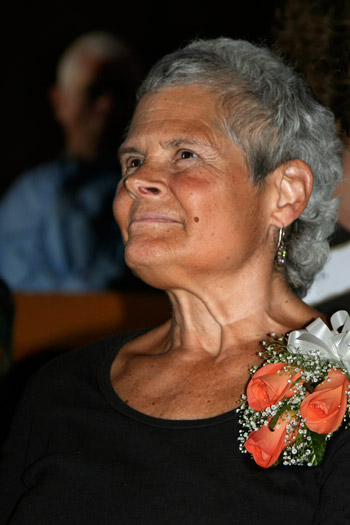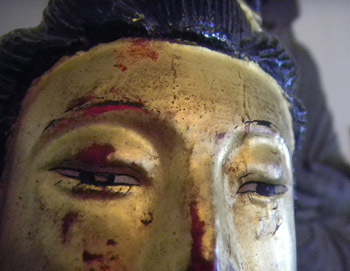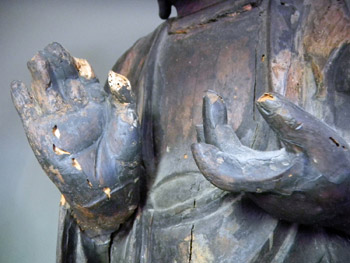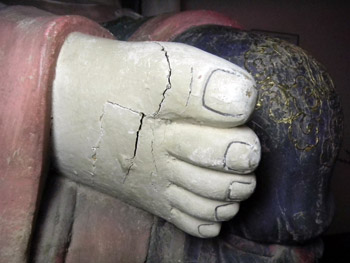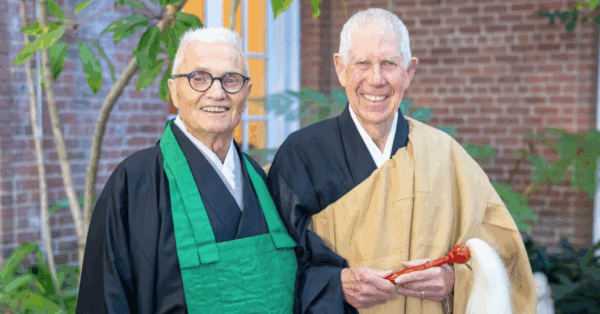by Jay Pennington, Sangha News Editor
Centuries ago, Zen master Dogen said, “in attachment, blossoms fall.” Today, Beata Chapman may be one of the best people to remind us, with the greatest sensitivity and tenderness, that this applies to our aging bodies, and to point us toward taking a helpful view of that.
Beata has practiced Zen with chronic nerve pain and post-traumatic stress disorder (PTSD) herself for 23 years. She also leads “Suffering and Delight” groups, which were started by her teacher Darlene Cohen 15 years ago. As Beata described, in these groups, “members make their suffering useful to others by authentically sharing their practice and life experience and supporting one another to keep practicing.”
On November 17 she will lead Sanctuary in the Free Fall of Our Changing Bodies: A Good Old Zen Workshop for Those 55 and Older, at City Center. The recently begun “Good Old Zen” program has already provided various popular offerings for this age group this year.
Although Beata says practicing with pain is not the primary focus of her workshop, it may be one important motivator for attendees. For those without particular challenges around pain, accepting the changes in physical ability and comfort that come with aging—and handling them with grace—remains a virtually universal challenge. In fact, grace is the quality that came through most vividly for me as Beata shared her thoughts with me on this subject.
The title of your workshop is striking. You have the nerve to apply the term sanctuary in the context of the unsettling and seemingly unholy experience of aging as our bodies fall apart. Whatever did you mean?
My late teacher, Darlene Cohen, was no fading flower; she had a lot of nerve living in a painful body and saying things like this:
Your body is a refuge. It does not head-trip on ‘if only I wasn’t in pain’ or ‘if only I had that vicodin.’ It does not care; it just gets to work on healing. If you get quiet and connect with the healing part of your body, it will comfort you. Connect with it as a companion, gently saying, ‘I know you, we’re together again.’
Sanctuary has some sense of safety and protection, in addition to sacredness. As Darlene often said, “the only safety is in the present moment.” She was pointing out that wandering outside its bounds is a set-up for panic, anxiety and other very uncomfortable states of bodymind. Within the present moment we can learn to trust and take sanctuary in this very bodymind, just as it is. And truly receiving “just this” is profound and gives a deeply felt sense of the sacred.
Ultimately, sanctuary in free fall is allowing yourself to live in a burning house from the true ground of not knowing, while at the same time grappling with the grave import of the great matter—the burning house. So we live in our burning houses as skillfully as we can, taking good care of ourselves and our zazen, and offering what we have freely to others. This is what I mean by sanctuary, and it is deep body practice. The burning house will be a hot topic at the workshop.
Is there anything about how the Buddha met his own experience of aging and sickness that might provide a guide for us “in the free fall of our changing bodies”?
I am inspired by Shakyamuni Buddha’s great generosity in living and dying in Sangha. I feel tremendously moved by present day buddhas who are offering us similar gifts here and now.
For example, Abbot Myogen Steve Stücky with his practice of gratitude right in the midst of a diagnosis of quickly progressing terminal cancer (talk about free fall!) is showing all of us how to live fully and take refuge in the free fall of a changing body. Loosening the grip of grasping at some idea of what it is to be alive and to die, to heal and to work with pain, Steve is offering his suffering for the benefit of all of us.
Abbess Christina’s fall and ongoing healing from a concussion is another recent example that comes to mind. Looking wholeheartedly, she made a brave decision to step down as abiding abbess to take care of her own life, modifying her work to better meet the authentic needs of her bodymind at this time.
Blanche Hartman, who is thoughtfully adapting sitting and bowing postures as her strong body changes with time and age, powerfully shows us how to stay flexible and fluid through refuge in what is, without grasping at preference. There are many present-day masters such as these who are right here with us now, offering their embodied lives for the benefit of all, showing us all how aging, sickness and death might be lived.
From your 23 years of experience practicing with chronic pain, can you explain how it is possible to get comfortable enough to practice Zen meditation when a person has to deal with relentless physical or mental pain?
Practicing zazen with pain can’t be about comfort. If it is, forget it. No one would keep going. I have learned that there is pain in all four noble postures, that zazen is more about alignment and dynamic stability rather than rigid non-moving.
Instead, my teachers pointed me to becoming stable enough to bear what comes, and refining my consciousness so that it can narrowly focus on some part of my bodymind that is not presently hurting and take sanctuary there; then to widen my field of awareness to notice objects and sensory stimulation that is pleasant, comforting or poignantly rich; and to be able to switch at will between narrow and wide fields of consciousness. At the workshop we will talk more about this and use practices that directly demonstrate these capacities.
For me, the single most important characteristic for living a life with pain and continuing with zazen is curiosity. Next comes creativity. We will talk about the importance of these in the field of changing bodies and how to encourage them in our everyday activity.
What will the workshop offer for those (over 55) with few current challenges with pain?
Those who come for this workshop will determine what we focus on. We will begin with a brief zazen period, introductions and then some free writing to help us shape the content of the workshop within the framework of finding sanctuary, solace, home—right where we are, right in the free fall of getting older ourselves, meeting busy lives with changing bodies, and caring for aging parents.
In addition, the basic teachings of “Suffering and Delight” are entirely useful and beneficial to everyone because all of us have some loss or discontent to which these practices apply. I have not yet met anyone who wouldn’t like to learn how to mine more pleasure and comfort from the mundane moments of their lives. At the very least, and this is no small thing, grief is a constant companion as we work with rapidly changing bodies, whether that changing is due to pain or illness or growing older, or some combination of these conditions, which we all share.
We will use several different modes of meditation to get us into our bodies and directly test the bold statement that one can find sanctuary right in the free fall itself. These practices will not be specifically about pain or working with pain, but more about aging and changing bodies, and how we might find stability right here, comfort in just this.
Ultimately, our question is how we might loosen the grip of our preconceived notions and expectations, wishes and hopes, so we can really be in our experience as we encounter what the Buddha found that motivated his search for enlightenment—namely sickness, old age and death with all their implications. We might not like it, but we wouldn’t want to miss it!
Continue exploring sanctuary in free fall with Beata on Sunday, November 17, in Sanctuary in the Free Fall of Our Changing Bodies. In the simple brown-bag lunch you will bring, remember to include at least one item that you especially enjoy.



